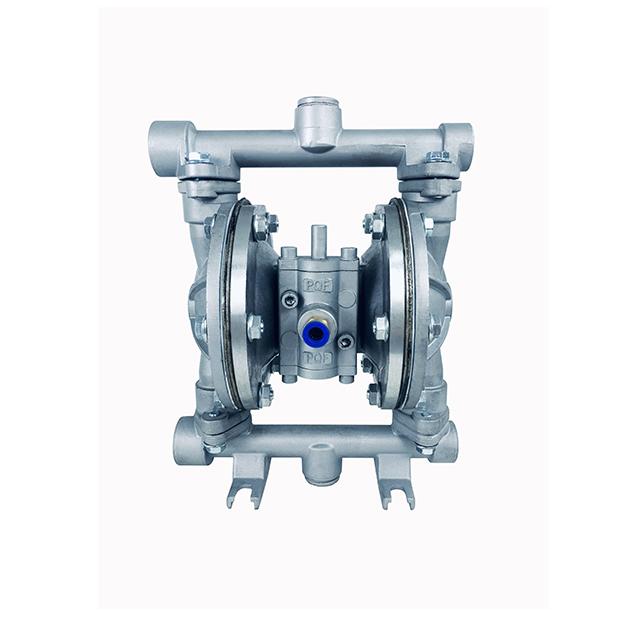Diaphragm pumps are versatile fluid transfer devices used in many industrial, chemical and water/wastewater applications. Their design provides unique benefits but also some limitations compared to other pump types. We’ll examine the key pros and cons of diaphragm pumps to help determine if they are the right solution for your pumping needs. Diaphragm pumps utilize […]

Diaphragm pumps are versatile fluid transfer devices used in many industrial, chemical and water/wastewater applications. Their design provides unique benefits but also some limitations compared to other pump types. We’ll examine the key pros and cons of diaphragm pumps to help determine if they are the right solution for your pumping needs.
Diaphragm pumps utilize a flexible membrane and check valves for gust-tight fluid handling without contact between moving parts. This makes them ideal for challenging fluids and situations. But their operating principle also constrains performance parameters compared to piston or centrifugal pumps. Let’s dive into the details.
Here are some of the key reasons to invest in an air diaphragm pump:
Diaphragm pumps can safely handle aggressive fluids including solvents, acids, slurries, and viscous liquids with suspended solids. The diaphragm isolates the fluid chamber from the air drive mechanism. Versatile materials like PTFE, polypropylene, silicone and fabric-reinforced rubbers allow pumping of virtually any liquid. This versatility makes them a go-to for critical chemical transfer and dosing tasks.
The sealed diaphragm chamber creates a vacuum during the intake stroke, enabling self-priming up to 20 feet or more depending on pump size. This allows pumping from low-level sumps and tanks without needing to first fill the suction line. Once primed, diaphragm pumps can run dry indefinitely without damage. Both capabilities simplify installation and operation.
Diaphragm pumps contain the fluid internally with no seal around a rotating shaft. The flexible diaphragm and check valves provide gas-tight transfer without leakage or fluid contamination. This makes them ideal for handling volatile liquids or hazardous chemicals. Diaphragm pumps are approved for explosive gas atmospheres. They also avoid shaft seal leaks that can undermine pumping efficiency.
Diaphragm pumps have only a few wear components – namely the diaphragms and check valves. These consumable parts are inexpensive and easy to replace in the field with basic tools. The lack of contact between internal moving parts also minimizes maintenance. Diaphragm pumps can operate for years before needing any service, particularly in clean fluid applications.
A key advantage of diaphragm pumps is their ability to run dry for extended periods without damage. Because the diaphragm provides separation between the air and fluid chambers, running the pump without fluid does not harm internal components. The air operated diaphragm pump can cycle on and off or operate continuously with the suction line empty. This facilitates start-up, flexibility in operation, and avoids the need to prime systems after sitting idle.
Here are a few limitations when it comes to air diaphragm pumps:
The back-and-forth diaphragm motion limits flow capacity compared to centrifugal and positive displacement pumps. Maximum flow rates typically top out around 400 gallons per minute, although much lower for smaller models. Flow is also pulsatile rather than smooth. Applications requiring high flow should utilize other pump styles.
Reciprocating diaphragm pumps produce an inherent pulsating flow that varies through each stroke. At higher speeds, this can cause vibrations and pressure spikes detrimental to piping systems. Pulsation dampeners are often needed to smooth out flow, adding cost. Careful pump sizing and control is also required.
Common small-to-medium diaphragm pumps generate 50-100 psi maximum. Although the diaphragm itself can withstand higher pressures with thick elastomers, the air drive side is limited. The compressibility of air prevents achieving extremely high pressures from an air-powered pump. Maximum discharge heads are also constrained.
While diaphragm pumps can handle slurries and shear-sensitive fluids, their suction capability diminishes with very viscous liquids or high concentrations of solids. Flow can sheer apart diaphragms over time in extreme cases. Positive displacement pumps may be better suited for thick, viscous flow.
While diaphragm pumps handle a wide viscosity range, temperature is a key limitation to consider. The elastomeric diaphragms used in most pumps restrict operating temperatures between approximately 10°F on the low end and 140°F high end. Outside of this range, the diaphragm material can harden and crack or soften and deform. Temperatures beyond the material limits will lead to premature diaphragm failure and electric diaphragm pump damage.
Special diaphragm materials like Teflon (PTFE) or silicone can provide extended high temperature capability above 200°F. But these cost more and have less flexible life. Cooling jackets or heat exchangers can also maintain proper temperatures. However, the standard rubbers used in common diaphragm pumps inherently limit their effective temperature span. Applications with flammable fluids may also require further hazardous area certifications at elevated temperatures. Check your process fluid temperatures and specific material compatibilities when selecting a diaphragm pump.
To summarize the unique pros and cons of diaphragm pumps:
Diaphragm pumps offer versatile fluid handling with low maintenance needs. Their self-priming, dry-run safe operation simplifies many applications. However, factors like pulsation, viscosity limits and temperature sensitivity require consideration. Critical processes may benefit from their leak-free ability to pump aggressive fluids. But high flow supply transport may call for a different pump style. Assess your specific pumping requirements to determine if a diaphragm pump is the right solution.For expert guidance selecting optimized pumps for your industrial or chemical processes, contact the specialists at Aocheng Group. Their experienced team can match the best pumping technology to meet your needs. Rely on Aocheng Group for responsive support from initial pump selection through years of operation.




